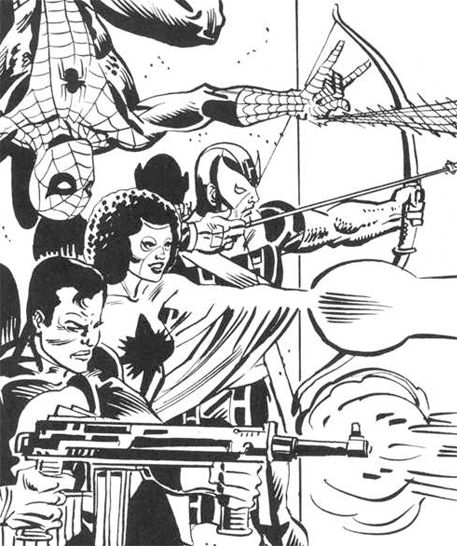
When Dungeons & Dragons first appeared in the early 1970’s, it opened up a whole new genre of games to the world. Soon, similar products began to appear, but they were essentially the same thing – fantasy role-playing games. As the 1970’s ended, companies began to branch out and put out science fiction RPGs, Westerns, and the beloved superhero RPGs. It didn’t take long for the “big 2” to want to get in on the cash-cow that was seen in role-playing games and eventually licensed out their properties to different companies to make games based on their characters. Marvel ended up signing on with TSR (makers of Dungeons & Dragons) and TSR released the Marvel Superheroes Role-Playing Game! While never as popular as TSR’s flagship, D&D, the game saw many supplements released for it and would go through a revision a few years later and then a new system (SAGA) in the 1990’s. The rights to the characters eventually went back to Marvel and they tried releasing their own RPG and currently, Margret Weis Productions is the maker of the Marvel Heroic Role-playing Game. Today, we’re here to review the first one that began it all for Marvel RPG fans!
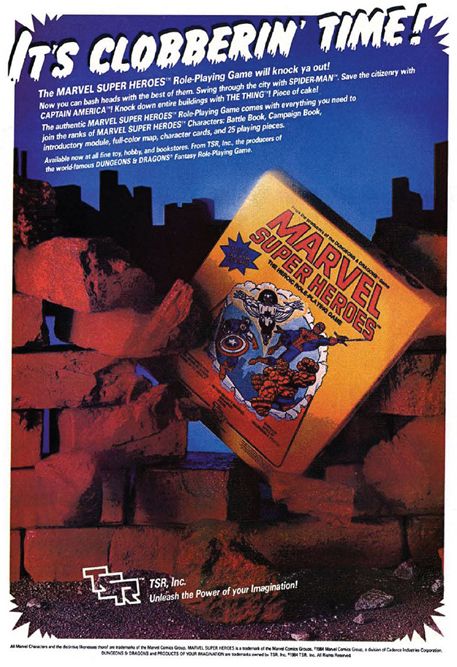
The original game was released in 1984 and, like many TSR products, came in a box set. The set contained three books – The Battle Book, the Campaign Book, and the Adventure Book, along with game maps, counters, some d10 dice (for percentile rolls) and a crayon to fill in the dice (this was what many TSR products with dice back then did). The Battle Book is a quick introduction to the game and sets up the rules. The Campaign Book goes into more details about equipment, powers, and how to make your own original characters. The Adventure Book contains a quick scenario (“Day of the Octopus”) but it’s set up more so to use established characters instead of your own (in an effort to get a feel how the game plays). Once that is done, then the players can create their own characters if desired and the judge can create his own adventures for the heroes to go on!
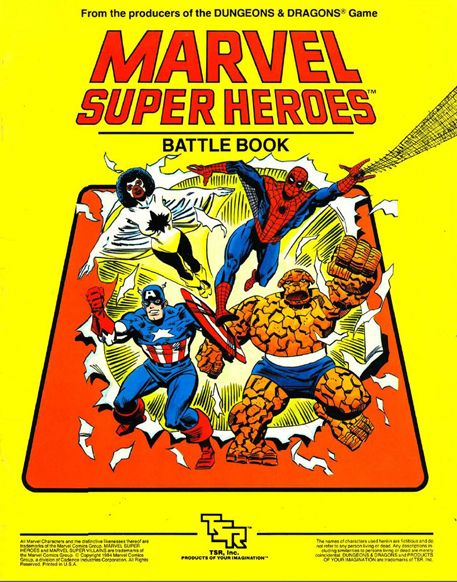
The first book, the Battle Book, is the basic rules of the game. The game uses seven stats – Fighting, Agility, Strength, Endurance, Reason, Intuition, and Psyche (or FASERIP for short) and each is based on a number (1-100) and rank (Feeble, Poor, Typical, Good, Excellent, Remarkable, Incredible, Amazing, Monstrous, Unearthly, and the Class 1000 (for people like Galactus I guess!)) On top of their stats, characters also get superpowers (from mutants, to radioactive gopher bites, incredible suits that let the user jump great heights, to guns and magic!) and talents (regular skills). Characters are then assigned variable stats – Health (which equals Fighting, Agility, Strength and Endurance added together, between 40-400), Resources (money, equipment), Popularity, and Karma (like luck, points that can be used to help out in dice rolls, adding Reason, Intuition, and Psyche).
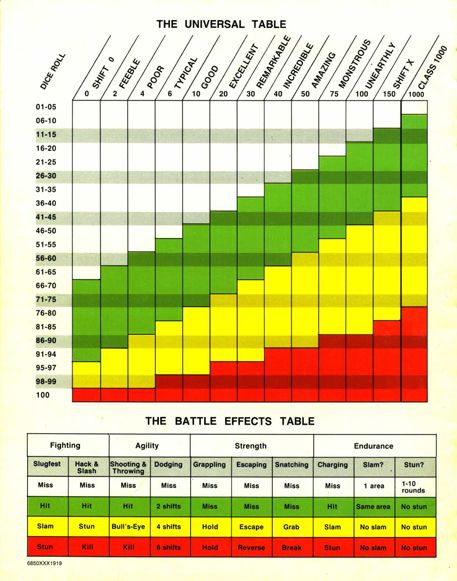
What good are all these things? Well, they allow a character to pull off FEATs (Function of Exceptional Ability or Talent – pretty much the dice rolls). Using a chart, the gamemaster (GM) has the character roll and based on their rank for what they are rolling, he checks the chart to see if they succeed (green, yellow, or red) or failed (white). If a FEAT roll failed, a player can use their Karma to make it successful (which, depending on how much it failed by, could result in a lot of Karma being used). Karma could also be used to lower someone else’s die rolls.
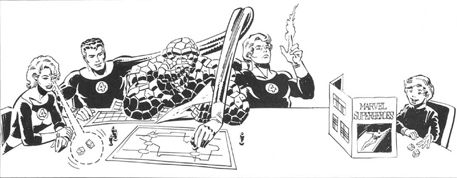
The game then expects you to use the maps and counters in playing. They help show the position of everyone relative to everything else. I’ve never been big on counters/miniatures besides for the basics (showing where you are) as I feel, if used too much, they can take away from the game (as players then get too concerned where everything is located).
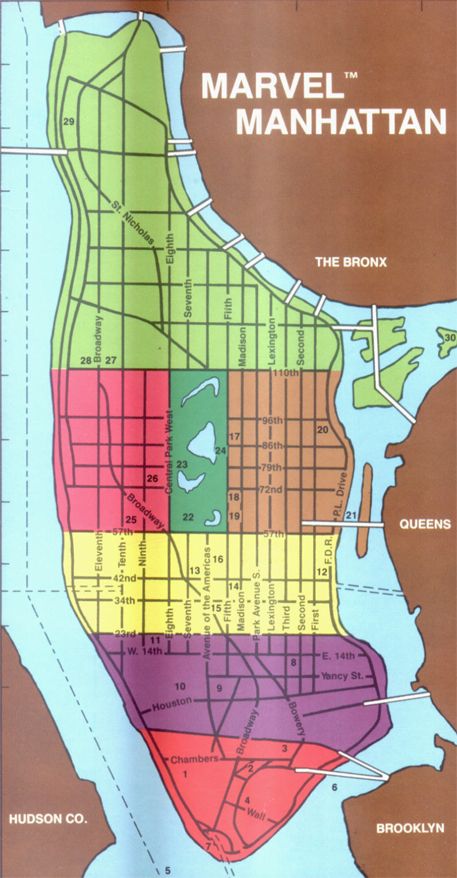
Combat is fairly straight forward. Like most RPGs, each side declares actions, initiative is rolled (higher number wins and is the “attacker” and then vice versa), making rolls against the difficulty chart provided and based upon everyone’s actions. Damage is calculated and everything continues on to the end. Really pretty simple.

The second book is the campaign book. While the first book assumes you are going to play an actual Marvel character (Spider-Man, Captain America, or everyone’s favorite – Iron Man (
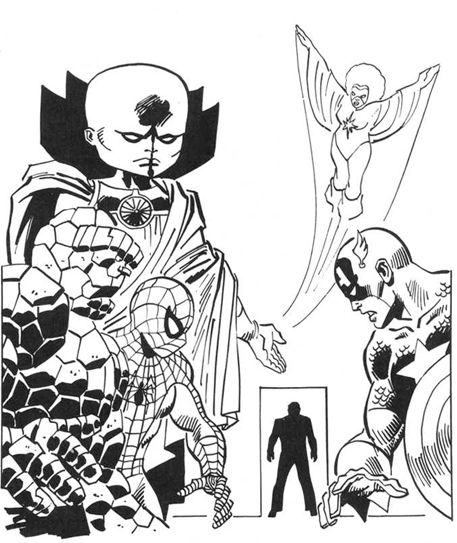
One of the interesting aspects of game design from the 1970’s-1990’s is that many companies felt they needed completely different systems for all their games. So while TSR did produce D&D, Marvel Superheroes, Gamma World, Star Frontiers, Boot Hill, Top Secret, and Gangbusters, each game actually uses different mechanics. Thankfully, most of the systems, while different, do have enough similarities that one can just as easily play one as the others. This means while you just can’t start playing the game if you’ve played one, the learning curve isn’t as steep if you’ve never played a game to being with.
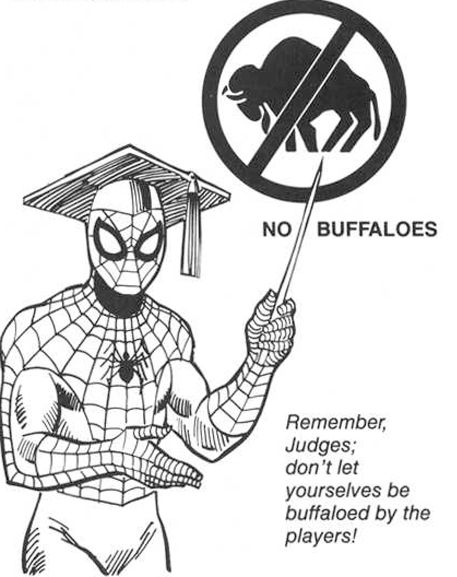
Another thing that can be bothersome to some people (and, early in my life, it did bother me a bit) is the art. In comics, we are used to one style of art from the issues we read. For me, as a early teen, it was Spider-Man and X-Men that I read a lot of. I would then see ads for these products and the art wouldn’t like the same as in the comic (close, but no cigar!). Well, being an adult and knowing now that different artists worked on the material is the reason it looked different. I don’t think TSR was getting Todd McFarlane to draw their RPG books!
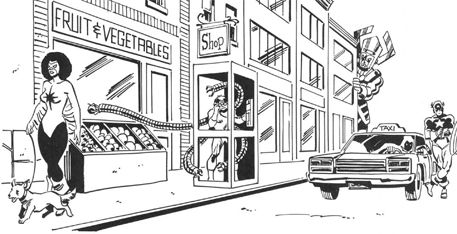
Overall, after reading the Marvel Superhero RPG, I must say this is a system I could get behind. It is fairly simple system to understand and doesn’t get bogged down into too many details. On top of that, TSR released a ton of supplemental materials for the game – guide books (with information and stats of actual Marvel characters, like Iron Man!) to adventures! Yes, for modern players, many of the stats maybe outdated (some later supplements deal with Iron Man’s “Silver Centurion” model, last seen in the Armor Wars from the late 1980’s!). However, there are still many fans of TSR’s version of the game and they continue to put out their own fan-material for it (just have to do some searching online).
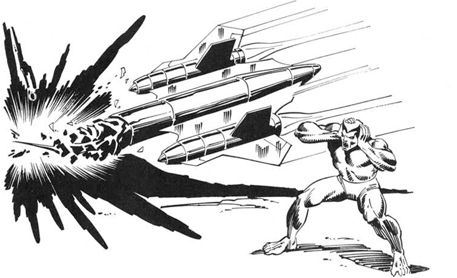
Being a simple system and based upon known properties, the Marvel Superheroes RPG is also a great way to get younger people into role-playing games and, being a “heroic” game, is good for the whole family to enjoy! If you can find used copies out there (ebay, Amazon, used book stores), I would suggest picking it up. I’m sure that many would also find it useful for references to 1980’s Marvel properties.
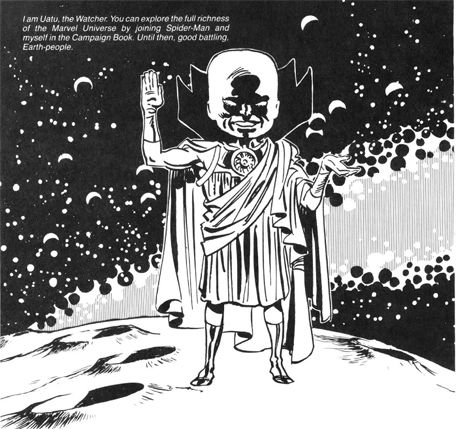

No comments:
Post a Comment